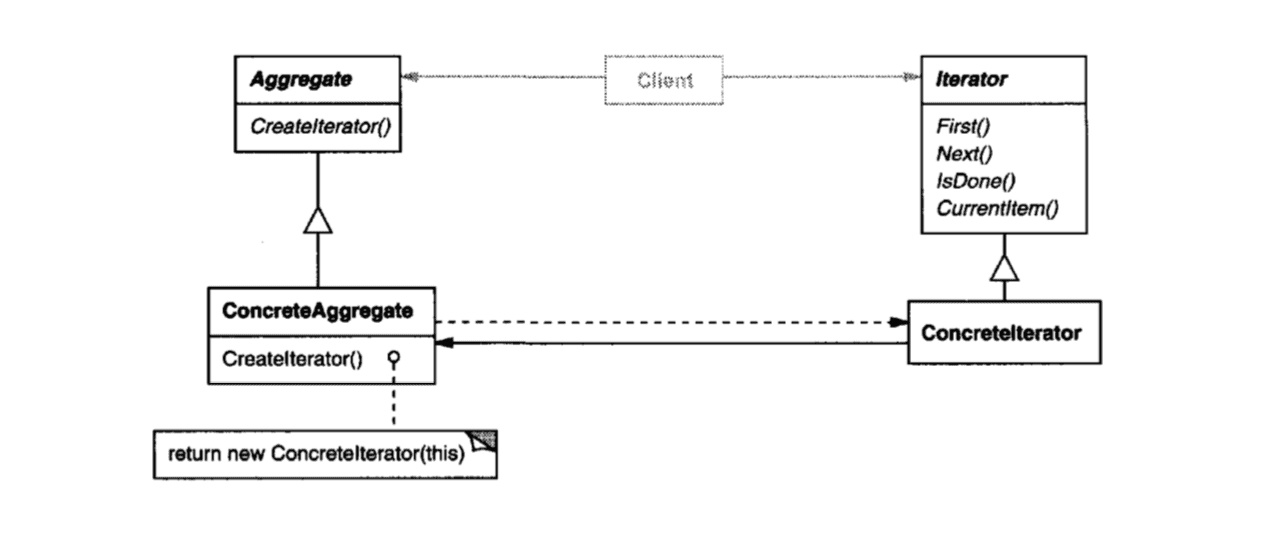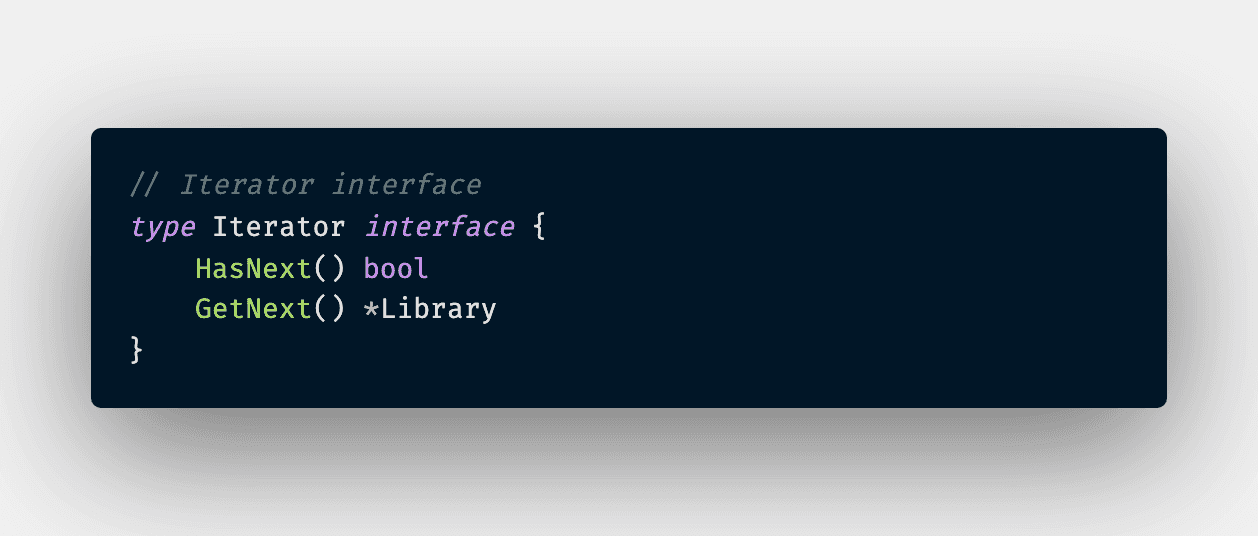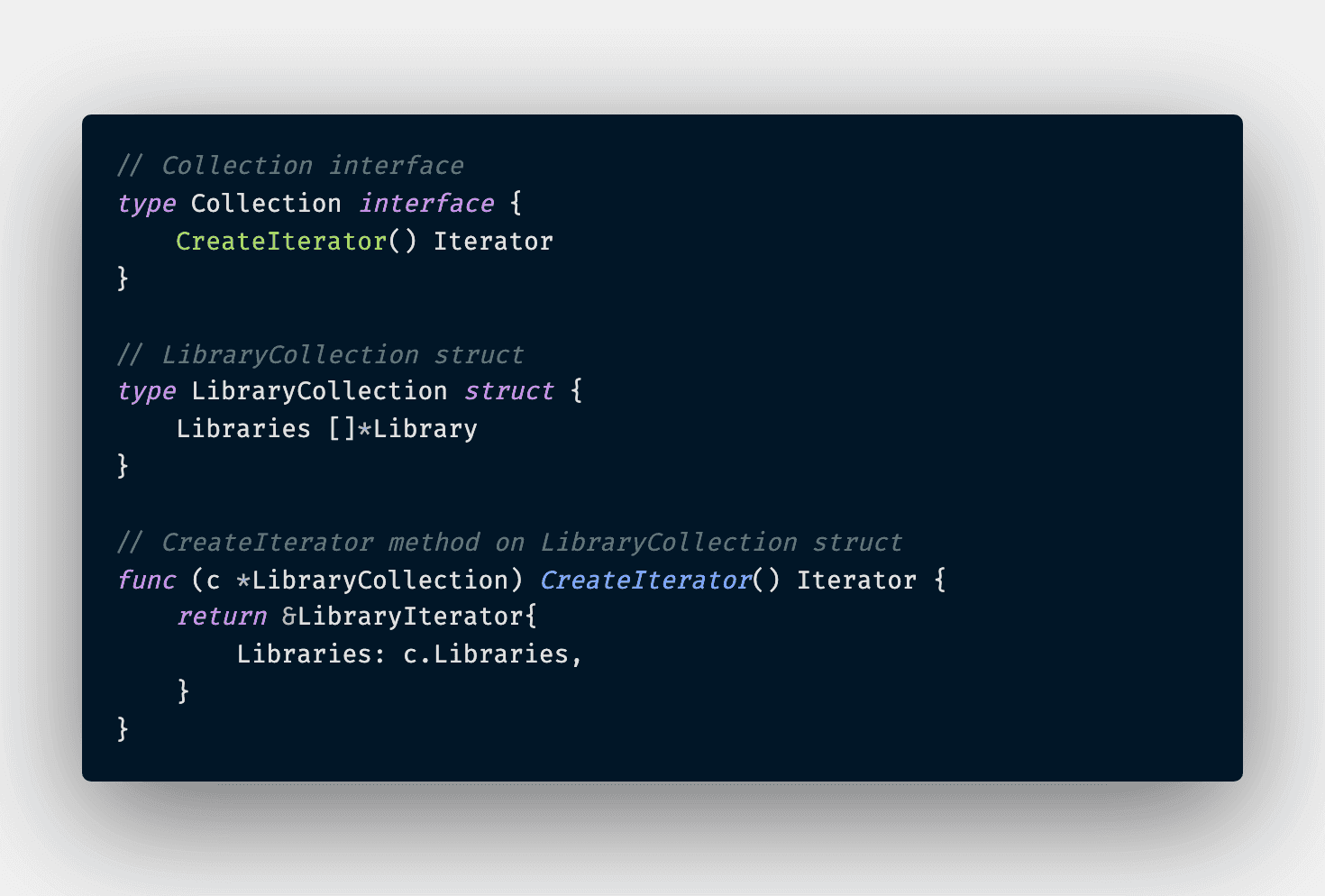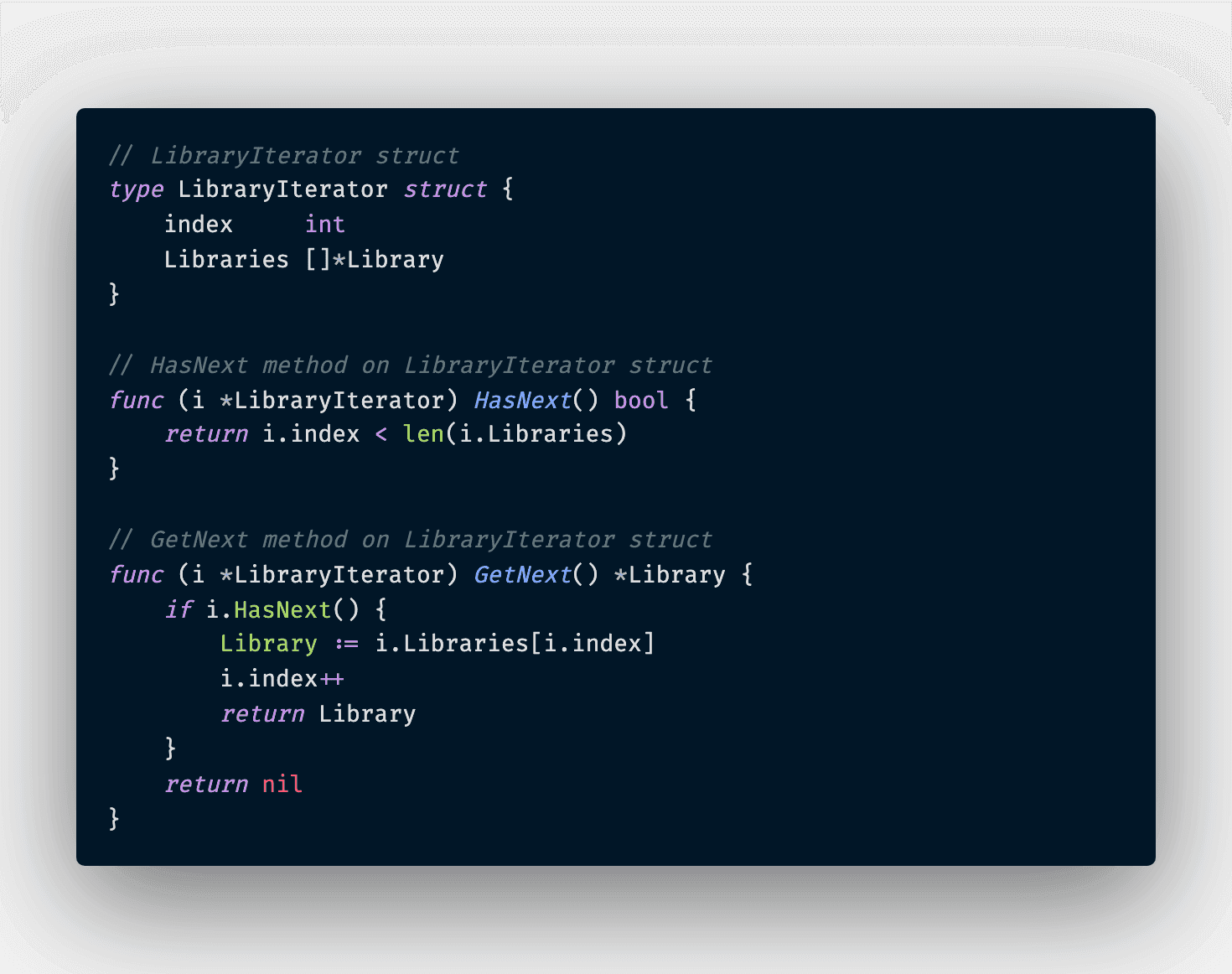Iterator Pattern
Provide a way to access the elements of an aggregate object sequentially without exposing its underlying representation
Applicability
- To access an aggregate object's contents without exposing its internal representation
- To support multiple traversals of aggregate objects.
- To provide a uniform interface for traversing different aggregate structures
Let's take a pretty simple example application in which we have a collection of libraries. We need to provide a way for this collection to create a iterator on demand. Hence, client code can just rely on simple interface defined by iterator to take iterate through the collection and take further action if needed. First, Let's define an Iterator interface
Next, we would need to define a collection interface and implement a concrete collection on which we create a iterator on demand
And finally, we would glue iterator and collection together by implement a sample library iterator as below
Eventually, we have it - the Iterator Pattern implemented in Go. This pattern provides an flexibility on independent development of client code, collection and iterator. Real life example would be how different recommendation tour guides to help you visit all attractive destinations in the city
P/s: The accompany code is included in this PR 😊
Happy coding 😎



